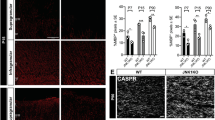Abstract.
The development and maturation of an oligodendroglial cell is comprised of three intimately related processes that include proliferation, differentiation, and myelination. Here we review how proliferation and differentiation are controlled by distinct molecular mechanisms and discuss whether differentiation is merely a default of inhibited proliferation. We then address whether differentiation and myelination can be uncoupled in a similar manner. This task is particularly challenging because an oligodendrocyte cannot myelinate without first differentiating, and these processes are therefore not mutually exclusive. Is it solely the presence of the axon that distinguishes a differentiated oligodendrocyte from a myelinating one? Uncoupling these two processes requires identifying specific signals that regulate myelination without affecting the differentiation process. We will review current understanding of the relationship between differentiation and myelination and discuss whether these two processes can truly be uncoupled.
Similar content being viewed by others
Explore related subjects
Discover the latest articles and news from researchers in related subjects, suggested using machine learning.Author information
Authors and Affiliations
Corresponding author
Additional information
Received 11 June 2007; received after revision 20 July 2007; accepted 16 August 2007
Rights and permissions
About this article
Cite this article
Rosenberg, S.S., Powell, B.L. & Chan, J.R. Receiving mixed signals: uncoupling oligodendrocyte differentiation and myelination. Cell. Mol. Life Sci. 64, 3059–3068 (2007). https://doi.org/10.1007/s00018-007-7265-x
Published:
Issue Date:
DOI: https://doi.org/10.1007/s00018-007-7265-x




